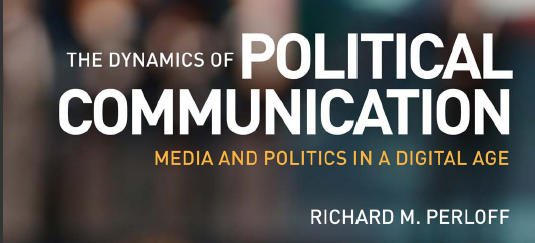Chapter 2:
Political Communication – Review
is the process by which language and symbols, employed by leaders, media, or citizens, exert intended or unintended effects on the political cognitions, attitudes, or behaviors of individuals or on outcomes that bear on the public policy of a nation, state, or community.
There are several aspects of the definition.
- Political communication is a process
- Political communication calls centrally on words and symbols (A symbol is a form of language in which one entity represents an idea or concept, conveying rich psychological and cultural meaning.)
- Group of leaders and Influence agents
- Political communication effects can be intended or unintended.
- Political communication is that effects occur on a variety of levels. ( Political media exert influence on the micro level, affecting individuals’ thoughts, candidate assessments, feelings, attitudes, and behavior.)
CONTEMPORARY POLITICAL COMMUNICATION
- One view is that elite leaders exert a preeminent impact on opinions and policy.
- A second view places the onus on media. It emphasizes that the media—both news and entertainment exert a preeminent effect on the conduct of politics. This viewpoint notes that the news media’s choice of issues, and the way they frame the news, can influence leaders and the public.
- A third viewpoint argues that the public calls the shots. In order to get elected and reelected, leaders have to be responsive to their constituents, implementing polices that the average voter supports.
In most political contexts, all three influence agents—elites, media, and public—interact in complex ways. The drama of political communication involves a trifecta: leaders, media, and citizens symbolically jousting among themselves and framing problems in different ways.
Politics Is Played on a Media Platform
Shanto Iyengar (2004) notes. “The role of the citizen has evolved from occasional foot soldier and activist to spectator” .
Jesper Strömbäck and Lynda L. Kaid (2008) take a complementary view, noting that the mass media mediate between citizens on the one hand and the institutions of government on the other. But the media are not neutral, bland mediators. They apply their own judgments and rules, in this way transforming politics.
Technology Is a Centerpiece of Political Communication
Although technology has always played a role in politics, it wields more influence today than ever before. There is a greater volume of political information, more instant communication between leaders and followers, and more opportunities for voters to exert control over the message (Johnson, 2011).
Political Communication Has Gone Global
Technology can also facilitate global conversations that never could have occurred in earlier times. This can be beneficial when the conversations bring people together or catalyze ideas. But when the two parties that converse are at loggerheads or at war, technology reinforces and exacerbates tensions.
Political Communication Can Be a Force of Good and Evil
Like all weapons of influence, political communication can be harnessed for positive and negative purposes.
